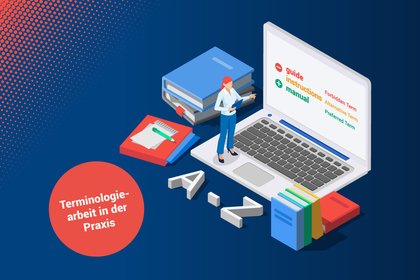Automatically Create Videos and Animations with TXTOmedia
Videos are widely used in modern technical documentation to clearly convey instructions. Video tutorials are popular, but both production and localization, as well as integration into existing documents, pose challenges to technical writing departments. The video specialist TXTOmedia therefore showed us on Quanos Connect how to incorporate videos and animations into ST4 fully automatically.

Video at an advantage
These days, many people rely on videos for tutorials. This is clearly evident on YouTube, and is the reason why people use this platform: 65% of users indicate that this is where they look for information when things need to be repaired. Learning also plays a major role in YouTube use: For 57%, this is one of the main reasons for opting for the platform.
But it is not just on YouTube that videos prove to be useful. Studies show that information is easier to remember when presented as an image, or even better, as a combination of text and images. Which is hardly surprising, as humans are “visual animals”. Purely physiologically, we are designed to take a look at things, and quickly identify them. So videos are a method of instruction that suits users’ habits.
Videos in technical writing
In technical writing departments, however, videos mean a bit of extra effort. These days, most technical writing departments work with component content management systems such as SCHEMA ST4. Because they use XML, they have many advantages when it comes to creating and managing text and graphics: reuse and automation being two of the most important ones. CCMS are also easy to connect to translation memories, and the different language variants are well organized.
As yet, however, it is still early days for the possibility of creating animations in CMS. One of the most advanced is the Callout in Motion feature of SCHEMA ST4. However, the possibilities here also reach their limits when it comes to action videos, or integration into PDF files.
TXTOmedia closes this gap with an XML-based video manager. It is possible to make a close connection to component content management systems with the widespread exchange format XML. Not only can PDF files be generated from content topics, they can also be enhanced with videos, voice data, or video snippets.
Video with an advantage
In the end, you get a differentiated content landscape that seamlessly integrates text, images and videos. This solution has many advantages for companies, as well as for customers. For one thing, it saves time and money. Videos are quickly created and easy to manage. All the videos can be managed as language variants, and text translations are quickly integrated into the animations.
At the same time, the solution is ready for use, company-wide. It is scalable, and can also be used for internal instruction requirements, such as service personnel qualification. This speeds up processes; and saves paper.
The XML-driven, automatic generation of video material gives the technical writing department another, easy-to-use tool to meet users’ needs. By being connected to a CCMS, video loses its status as a stand-alone solution, and is closely involved in the company’s central content processes. Customers receive the information in the formats they love. Companies become more efficient and save money. Nothing stands in the way of the multimedia tutorial.

